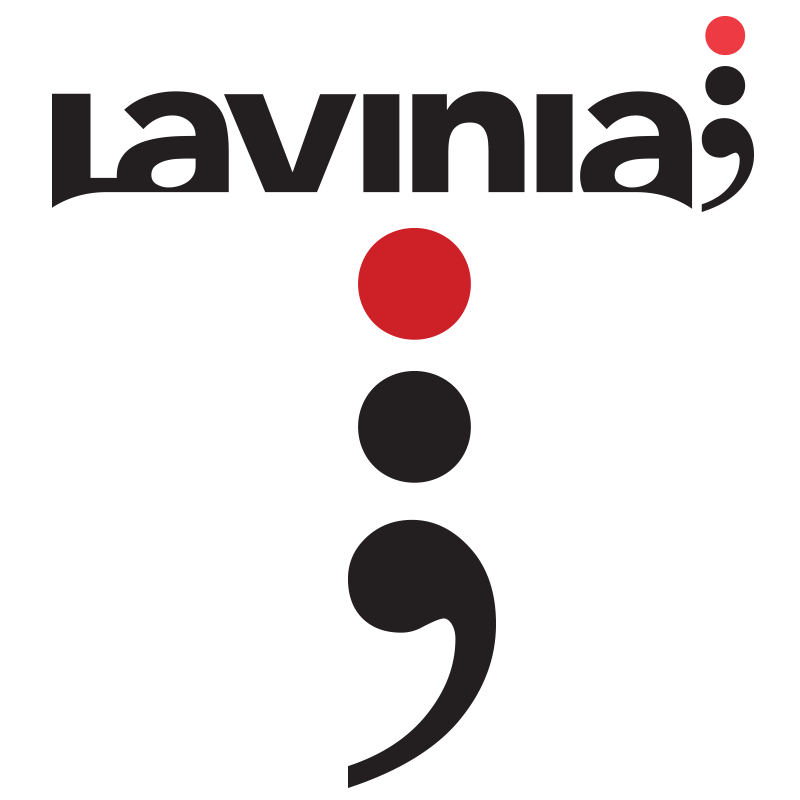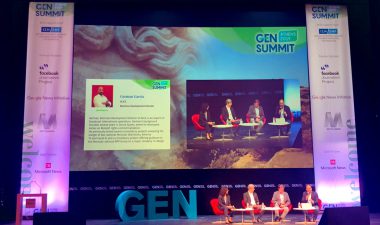
Communications Trends For 2016
New narratives, video as the star of the show, the revolution of backpack broadcasting, a solid commitment to new user types, business models, brand content and the influence of the Internet of things. Awaiting us is a 2016 full of challenges, opportunities and trends. This article reinforces some of the ideas that have forcefully emerged over the last year and underlines the changes taking place in the sectors of audio-visual media, journalism, social media and content marketing. We at Lavinia want to highlight the following trends in communications for a 2016 that will be marked by two major events: the Olympic Games in Rio de Janeiro and the presidential elections in the United States. Here are our thoughts:
1. MORE VIDEO AND MORE TELEVISION
Video is becoming omnipresent. Although for years one of the great annual protagonists of digital communications, dominated by YouTube in the online arena, today there are many competitors, large and small, powering video in multiple formats.
In terms of social media, native integration of video on Facebook or Twitter has been a catalyst for further growth. Although their true intention was to steal a piece of the pie from YouTube, social media has multiplied the omnipresence of video. Video will account for over 80% of online traffic in the next five years.
Video will account for over 80% of online traffic in the next five years.
The role of smartphones, which are becoming increasingly more powerful, is also critical to users promoting a true Mobile First revolution. Studies reveal that in 2016 online consumption of video content on smartphones will increase by 34.8% while video consumption on personal computers is only expected to increase by 6.5%.
In terms of applications, it is no longer about the dichotomy between Periscope and Meerkat but about empowering content through YouKnow or the commitment made by the omnipresent Facebook to innovating with technology-based solutions for its users, as explained by Wired.
2. THE REVOLUTION OF BACKPACK BROADCASTING
Cheaper broadcasting technologies enhance the production of this kind of audio-visual content. Backpacks with 3G or 4G connections enable live broadcasts of events anywhere in the world. Greater mobility, speed and range, and lower costs, are revolutionising television options compared to other solutions that require a satellite connection.
Real-time production is affecting not just user response but also that of the media
And the strengthening of the real time concept is affecting not only the response of users but also of the media, which have to adapt without sacrificing depth, contrast or quality of the information they provide.
3. THE INTERNET OF THINGS AND SMART TV
As for reception of content, the Internet of Things (IoT) is the ability that certain everyday devices have to use the Internet or to superimpose a layer of information on those devices. Therefore, with regard to our connected accessories (wearables) or our homes, the Smart TV is of particular relevance when considering our habits, what we consume or our needs. Enjoying concepts like TV Everywhere (or anywhere) or Services Everywhere are part of a developing trend. Potentially, as we said at the beginning, this results in the multiplication of screens in our daily life in our cities, in our homes and in our private spaces. What we see is a wonderful opportunity to produce content and develop both service- and information-based journalism.
4. TELEPHONE OPERATORS REINVENT THEMSELVES
Large mobile operators are diversifying their businesses. Traditionally focused on telephony and Internet services, they are moving towards the production of content. Vodafone, Orange and, above all, Movistar are expanding their businesses into the creation of content mostly through television rights for sports like football, basketball, motorcycle racing and Formula 1.
Beyond sport, fictional content, which is living its golden age via television series, is the other weapon being used by telephone companies. If Nokia had originally been in the nineteenth century timber industry only to later become a technology company, why can’t Movistar turn into a 21st century production company?
Entertainment services companies like Netflix and Amazon not only distribute third party content, but they are also establishing themselves as content producers.
When speaking of Video On Demand (VOD), the coming months will see the development of platforms to deliver a better user experience. This, in turn, will bring about more growth in catch-up video options, in which on demand television programs are available for a certain number of days after the original broadcast.
5. THE YEAR OF SNAPCHAT AND EPHEMERAL CONTENT
As for social media, the growth of Snapchat in 2015 has been meteoric, already boasting more than 100 million active users. Snapchat is now the third fastest growing social network among 18–34 year-olds (+34%), behind Facebook and Instagram. And one of the secrets of its success lies in the social and digital hyperactivity of its users — 400 million snaps are reproduced every day — mostly by millennials, but also due to its immediacy and ephemeral content, which evaporates in a matter of hours and transmits an unparalleled sense of privacy and exclusivity to its users. Another one of its strengths is vertical recording and viewing of its videos. As a mobile-oriented network, its commitment to this format has been a great success.
One of the factors of Snapchat’s success lies in the social hyperactivity of its young users
Brands are finding that Snapchat is a good way to reach a younger audience and, above all, that they can use it as a platform to get exposure for their advertising while, additionally, providing a financial return that other social networks don’t in spite of having operated for years in the digital environment.
In terms of media, The Huffington Post, CNN and CBS are working on the Republican and Democratic presidential primary debates in a more daring way that is having a profound effect on the race.
6. IMMERSIVE JOURNALISM
Parallel to the growth of audio-visual content, virtual reality, in its early stages of implementation, has entered the consumer fray as a kind of immersive video. Even if it may have been a static, 360-degree experience, the New York Times has doubled down on NYTVR, a Google Cardboard app the provides live, immersive experiences. A new kind of journalism is paving the way so that, virtually, we can be right in the middle of the Syrian war or a demonstration in Paris in the aftermath of the attacks by the Islamic State.
7. BRANDED CONTENT
Branded content is a very viable option that companies are working with more and more because it is a more direct and less interruptive way to reach users. The results are spectacular. If we look at the branded content of American brands we see results of up to a 50% increase in audience engagement. As we can see, it’s becoming an established option for improving business models.
The success of branded content is first determined by marketing in real time, by making users the priority by putting them inside the narrative, by the personalisation of content, and by a higher level of creativity than is found in traditional media.
8. GENERATION C
Those who consume, create a sense of community, are connected and share. They are users who are increasingly younger and move within the dynamic of production and consumption. Their interaction and contributions have an influence on the final outcome of the products and speech they consume.
Users are getting younger and move within the dynamics of production and consumption
The generation that consumes the most online video content, the Millennials (18–34 year olds), is reinventing itself in the form of Generation C (generation of content), and is expanding its age group.
Giving a voice to users, building a tale out of short stories and projecting the final product is a way of attracting and retaining audiences that takes on its own values and identity. That said, Generation C has its own character and doesn’t like to see advertisements that have not been chosen by them. They have all the power and can be very useful in business strategy.
9. RETHINKING BUSINESS MODELS
Media publications like The Economist and The Financial Times are beginning to think about advertising models based on “user attention” or the so-called “attention buy” model. What that means is they do not base their advertising model on simply printing banners but rather the quality of the user based on how they use the page, waiting times, their scrolling habits or their use of the mouse. It should be understood that in metrics, any query of less than five seconds is looked at as being performed by a user with a short attention span.
What’s happening is that the business model crisis is forcing the media to seek new ways to connect users with advertisers.
The media is having to seek new ways to connect users with advertisers
We have to move away from conventional advertising and have to evolve with ideas like crowdfunding, micropayments, pay per view, the freemium, sponsorships, branded content and subscriptions. And why not? As we have seen before, the Internet of Things creates possibilities for and by advertisers, which can offer not just the windows in which to advertise but also the services and solutions to advertise for connected users.
10. MOOC TRAINING AND NICHE CONTENT
The year 2016 also involves improving the digital content for study courses that go by the name MOOC (Massive Open Online Courses). Thousands of hours of quality content, that are fresh and interesting in a pedagogical sense, are needed. Companies that produce content have a great opportunity here, one that is so obviously related to the capacity of the media and businesses to be useful to society.
Moreover, speaking of opportunities, it is not merely circumstantial that some of the axes of Snapchat Discover revolve around specialised media like the Food Network or Tastemade; that BuzzFeed launches multiplatform content from its recipe channel; that some of the most viewed content on the New York Times website is culinary-related.
Niche content is slowly gaining importance over general-interest communications projects. Topics like education, science, health, lifestyle, decorating, cooking and technology keep on reaching a wider public.
Comentarios







Sports betting. Bonus to the first deposit up to 500 euros. Online Casino. sports betting ha comentado:
13/09/2022 16:52
Sports betting. Bonus to the first deposit up to 500 euros.
Online Casino.
sports betting
Have you ever earned $765 just within 5 minutes? trade binary options respondió:
04/10/2022 16:14
Have you ever earned $765 just within 5 minutes?
trade binary options